Art in Yashima, Takamatsu (Setouchi Triennale 2025)
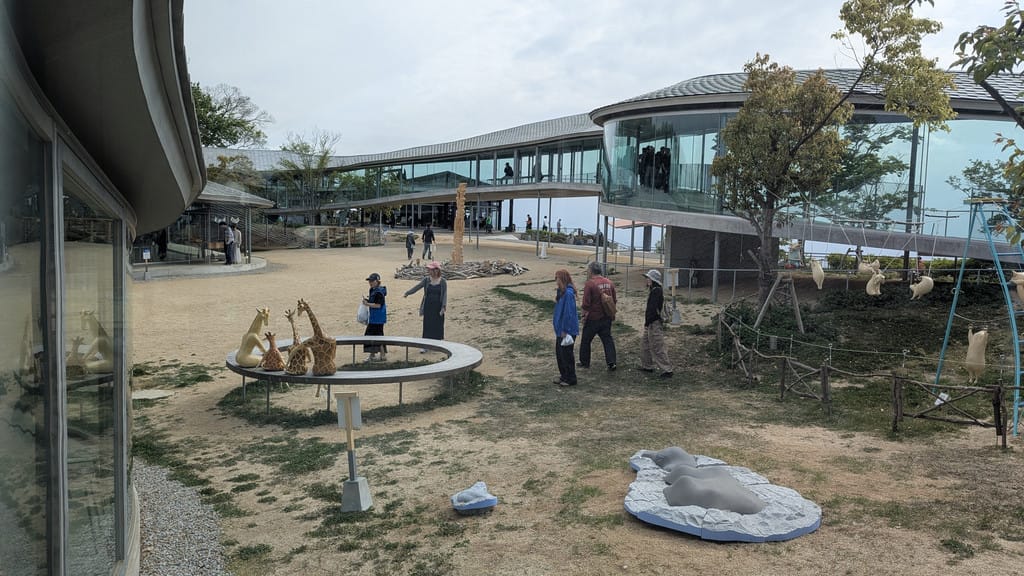
Hello everyone,
First of all, I want to apologize for being so quiet lately. This is the end of the spring semester here in Japan, so I've been busy. Also, my energy levels have been a bit low, probably due to the strong, steady heat of the past month.
Today, we're not going very far as we're staying in Takamatsu and heading to Yashima (well, it's all relative — I live closer to Megijima than Yashima).
If you're not familiar with Takamatsu, Yashima is the large, flat hill located in the eastern part of the city. You can't miss it — it's visible from pretty much anywhere.
It is one of the city's main landmarks, and various local governments have tried to turn it into a tourist attraction with more or less success. The latest attempt dates from three years ago, when the "Yashimaru" building was constructed. It is an interesting structure that serves absolutely no real purpose. Alex Kerr refers to such buildings as 'monuments in the middle of nowhere' in his book Dogs and Demons which I would highly recommend reading to gain insight into a side of Japan that you won't find on travel sites. Such buildings can be found all over the country, and more often than not, their existence is linked to 'favors' done by local governments for construction companies. But that's not the topic today — read Kerr's book to learn more about this unpleasant side of Japan.
In any case, we now have such a building on top of Yashima, and I suppose it was necessary to give it a purpose. So this year, during the Setouchi Triennale 2025, it is providing the backdrop for the "Yashima Art Zoo." This is a series of sculptures made by various Japanese artists, all of which represent animals.
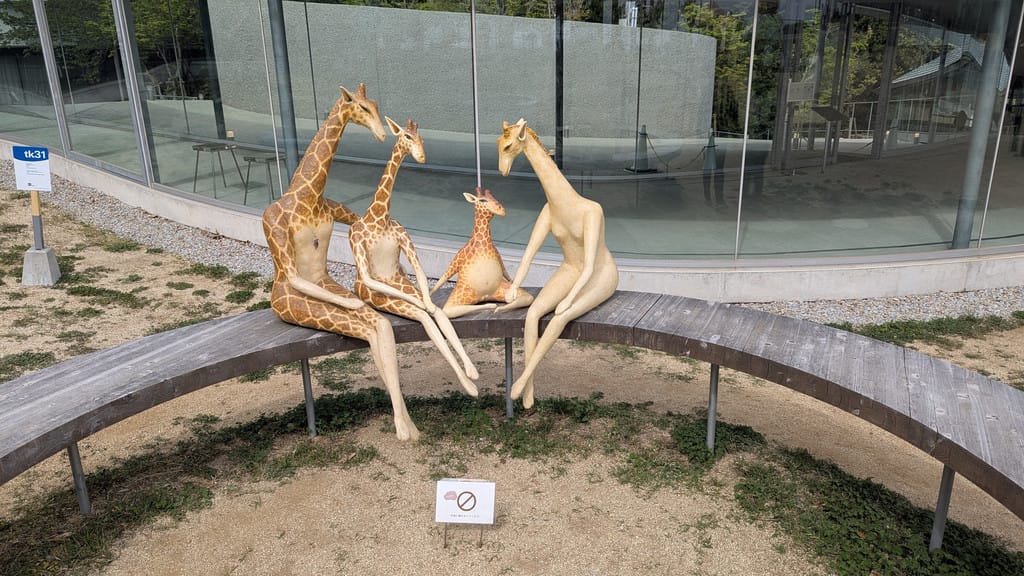
Let's start with Animal Story by Tomio Okayama. If you're familiar with western Kagawa and have visited the islands there during the autumn session of the Setouchi Triennale, you may have spotted these anthropomorphic giraffes. Tomio Okayama is indeed a local artist who has been adding his art to local cityscapes (or perhaps 'villagescapes') for several years now. Much of his work can be seen on Takamijima, some on Shamijima, and in a few other places that I can't quite remember right now. This year, he is officially joining the Setouchi Triennale for the first time, showcasing not only his giraffes, but also his pigs.
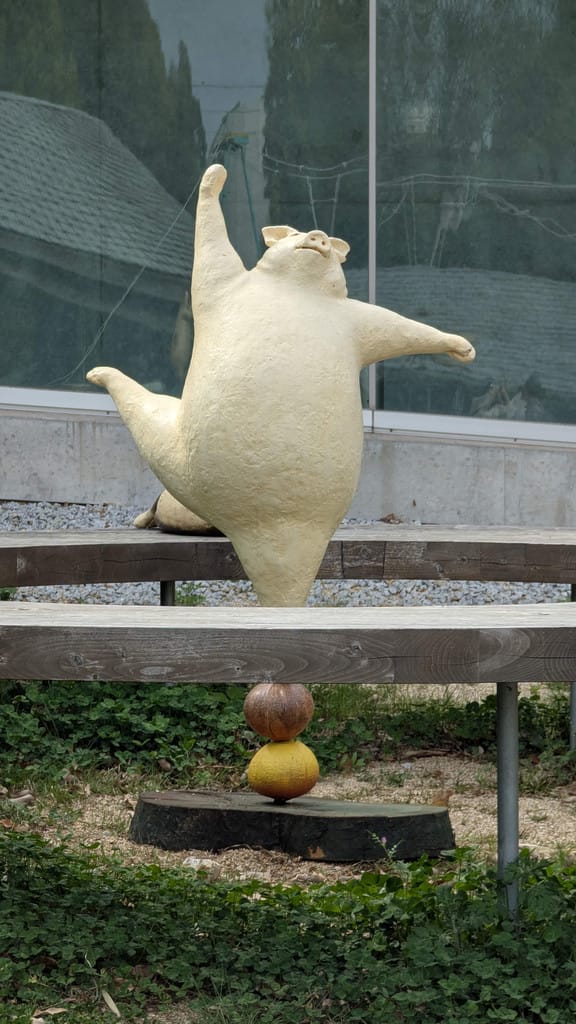
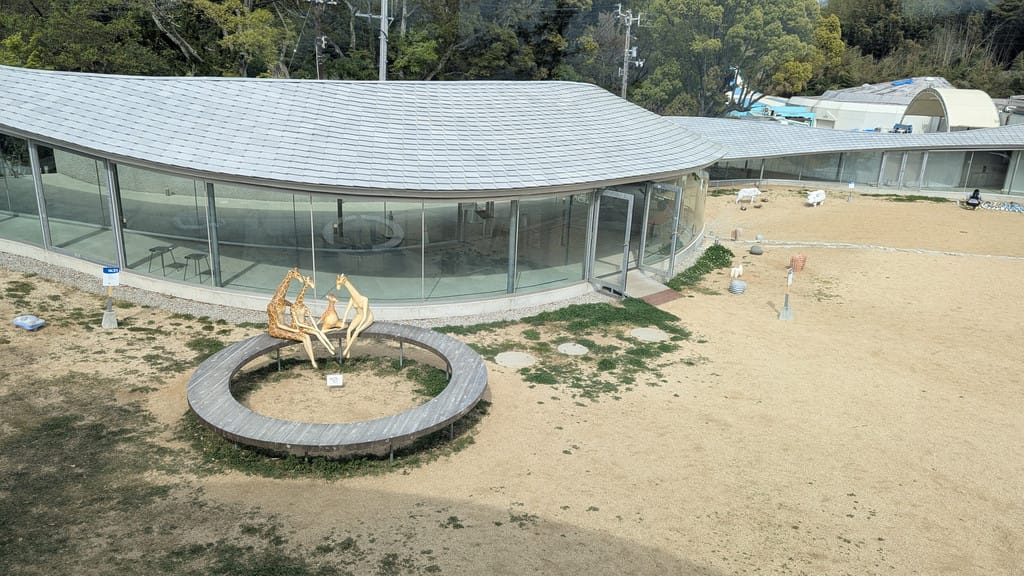
As I don't know much about the other artists, I will only give very brief introductions to their art.
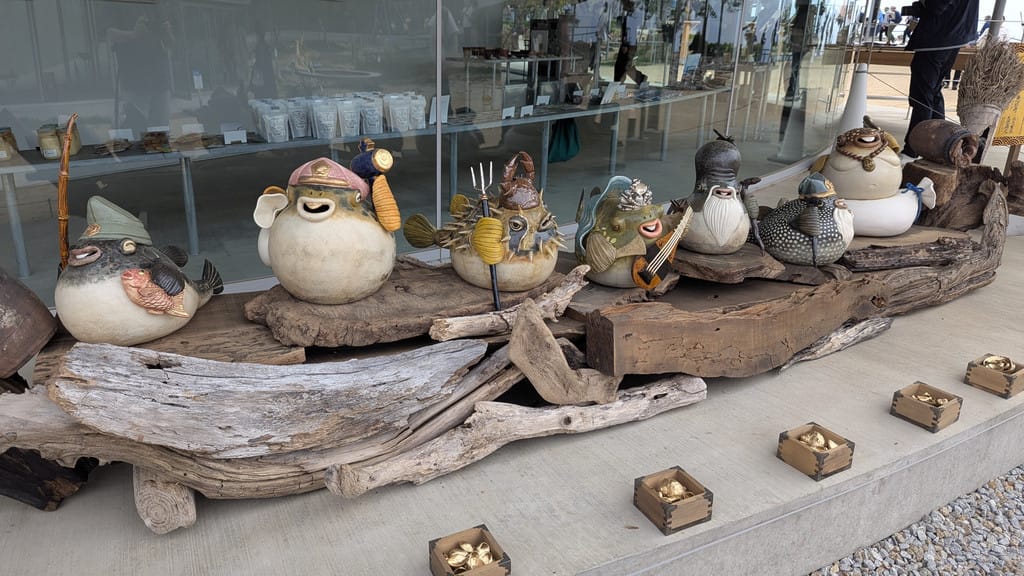
These pufferfish, dressed up as the Seven Lucky Gods, are aptly named The Seven Pufferfish Gods, are the work of Kiyoka Mori.
If I understood correctly, she recently graduated from university and this piece was her final project for her master's degree.
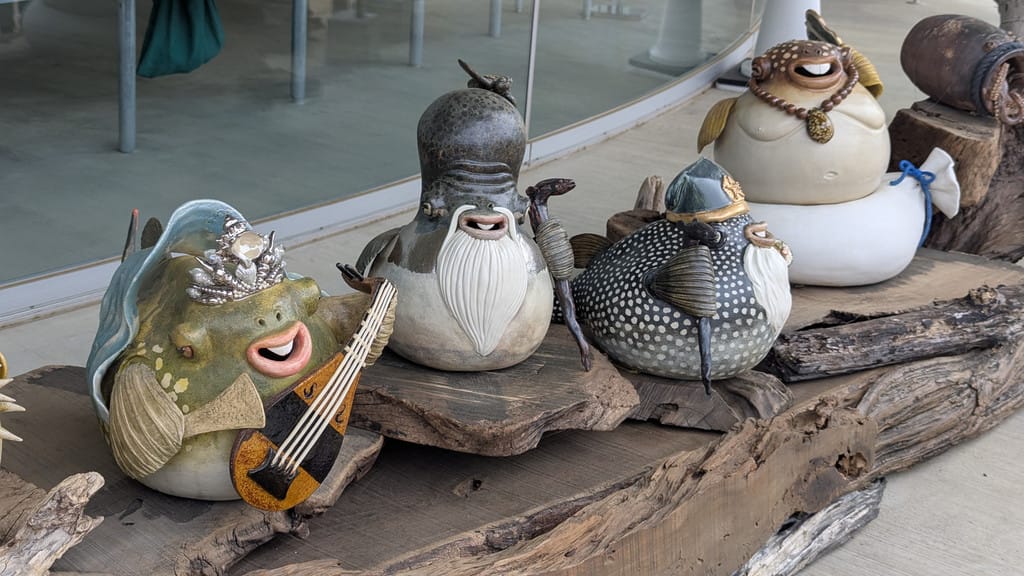
I really like them! They're the kind of art that just puts a smile on your face.
She also made a ceramic octopus which is pretty nice, too.
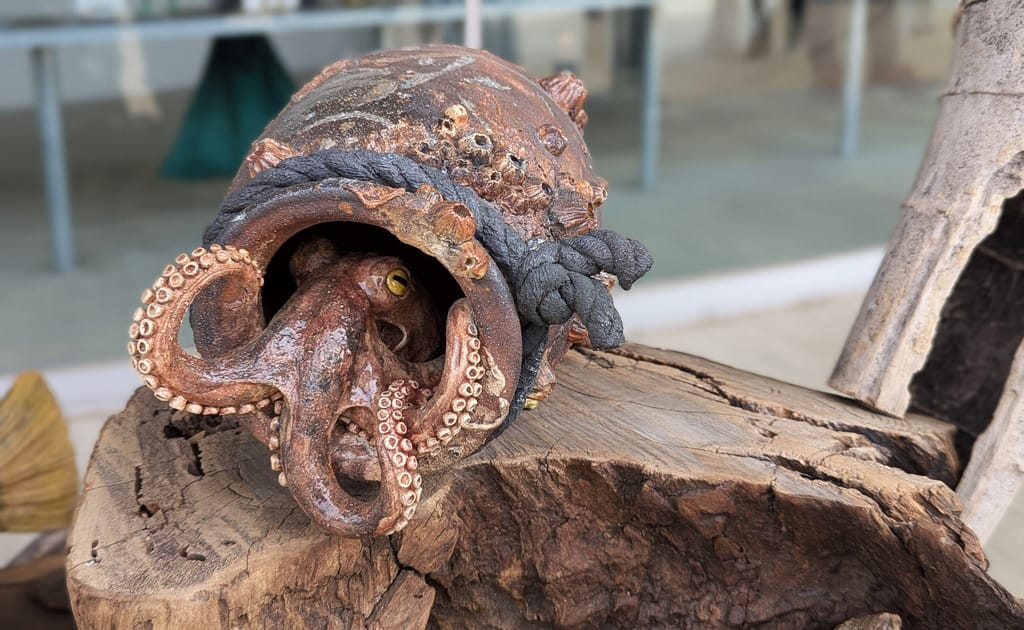
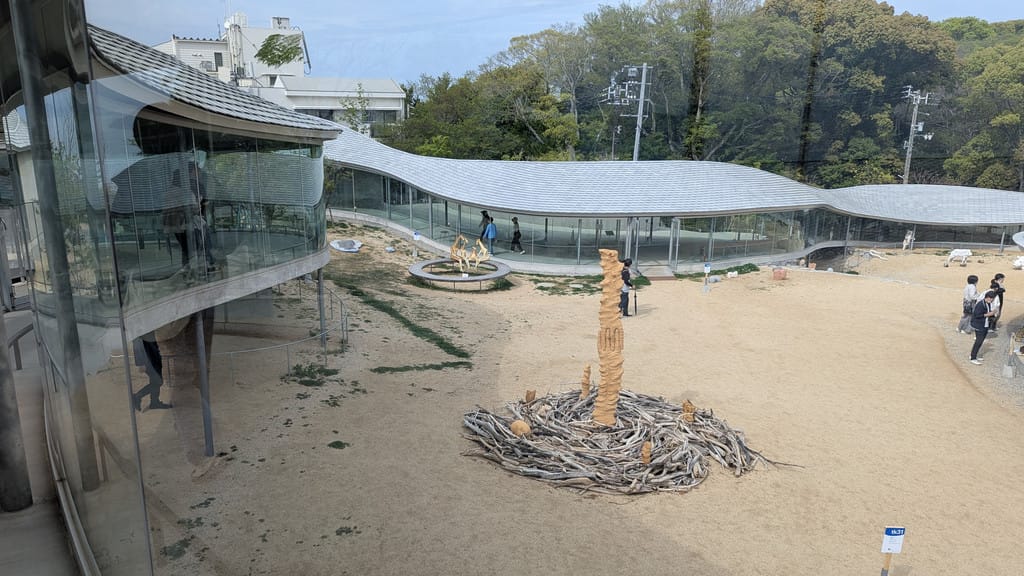
This pole is called Gift to the Earth, Sea and Sky by Eisaku Ando, and I guess it didn't really leave me with a strong impression as I didn't even take a close-up.
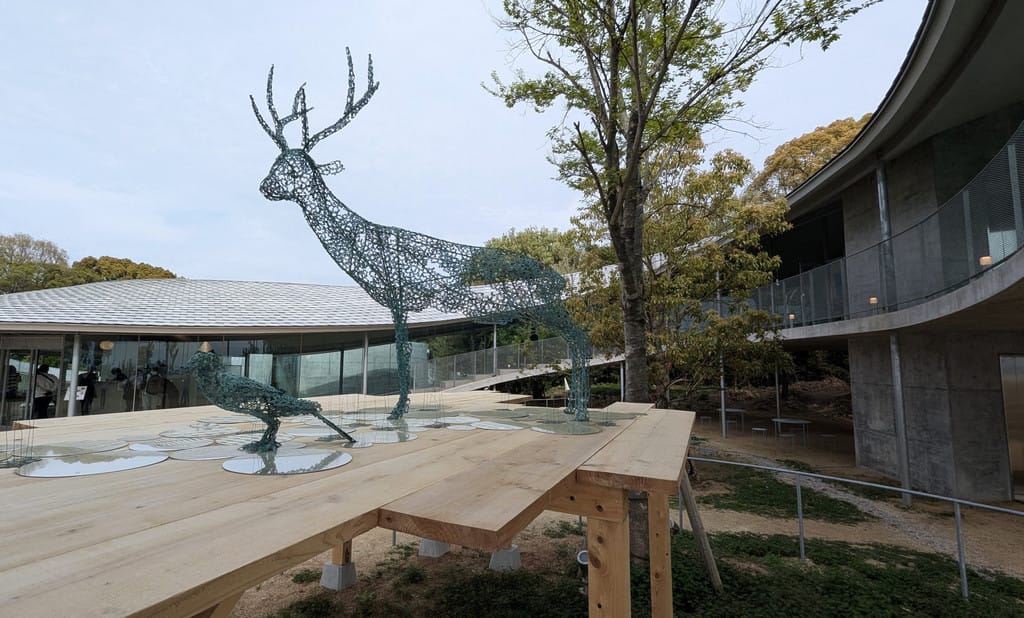
This deer and this three-legged crow are Rin by Yuji Nishijima.
I may sound like I'm complaining a bit today, but while I love these sculptures, I feel that their location is far from ideal. As they're "see-through," perhaps they would have been better located in front of a plain background, such as a wall or the sky.
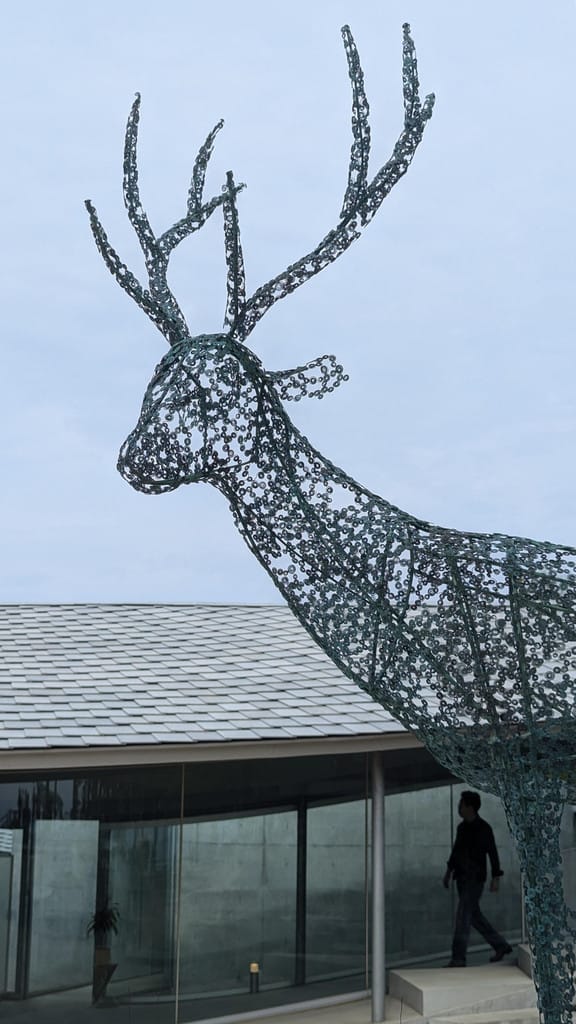
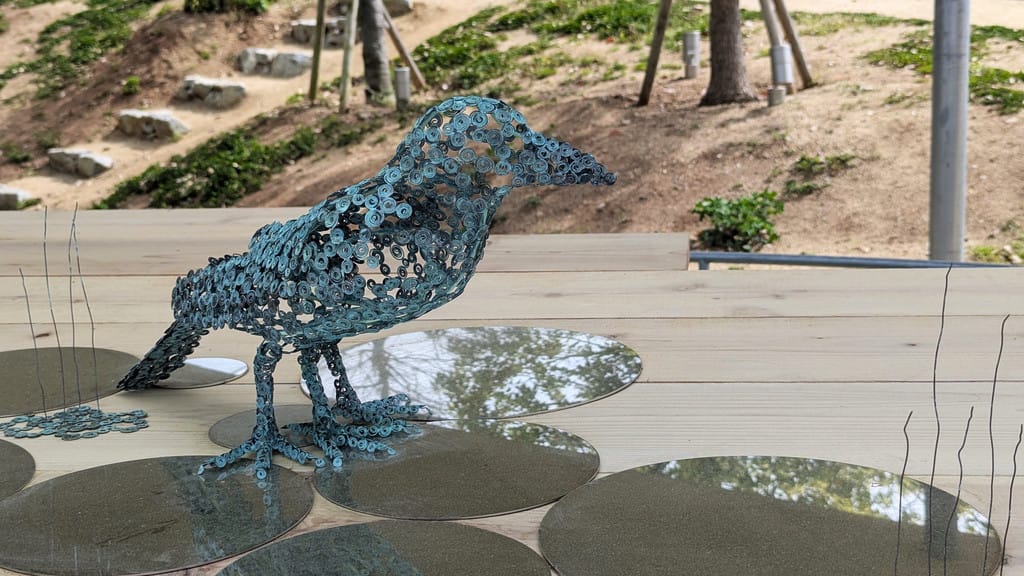
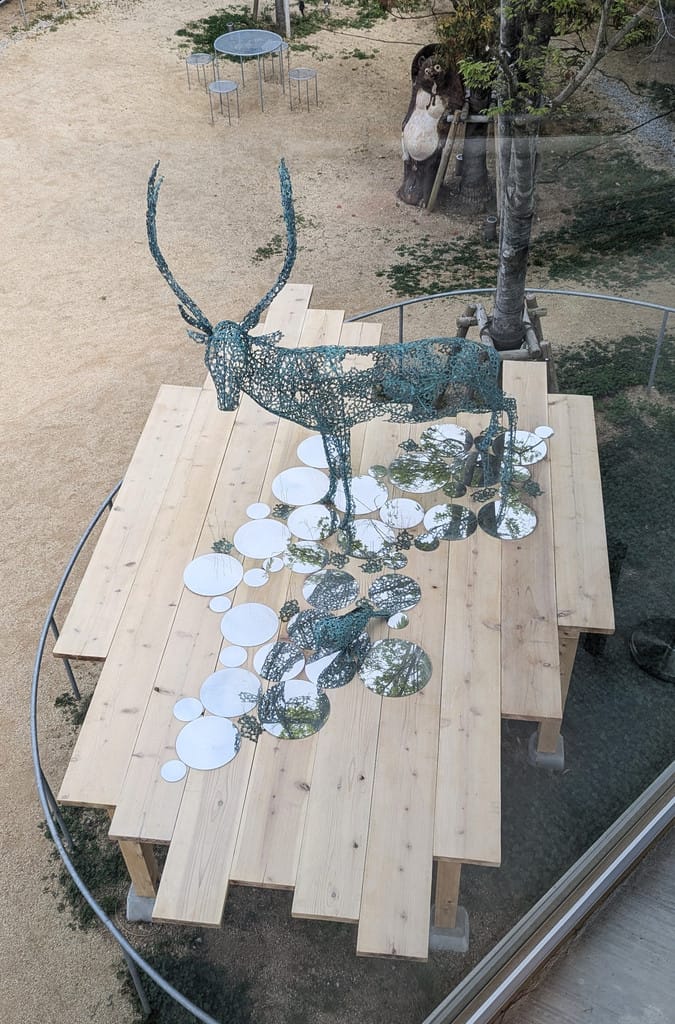
Yuji Nishijima online:
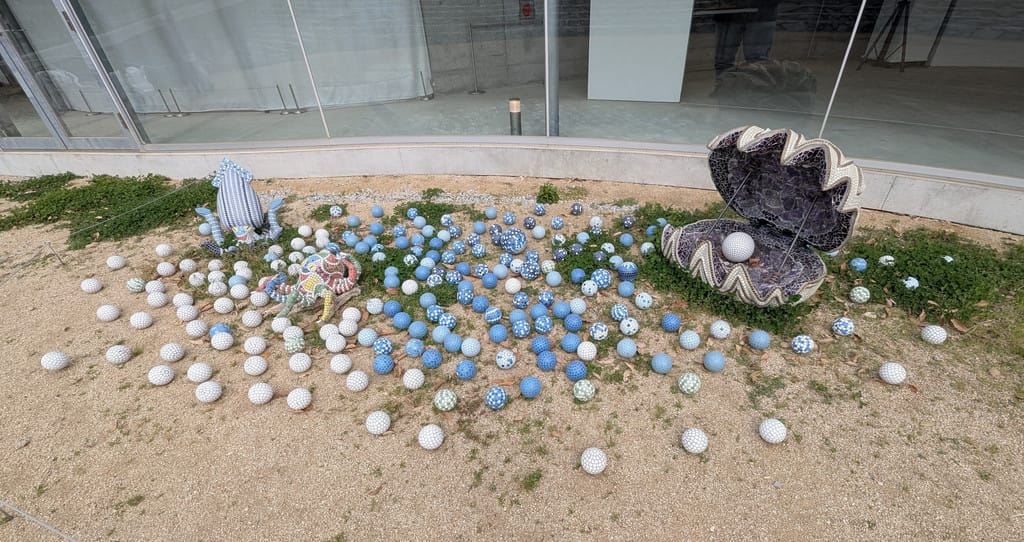
Once-in-a-lifetime encounter in Seto Inland Sea by Tadanobu Tsuchiya.
Cute.
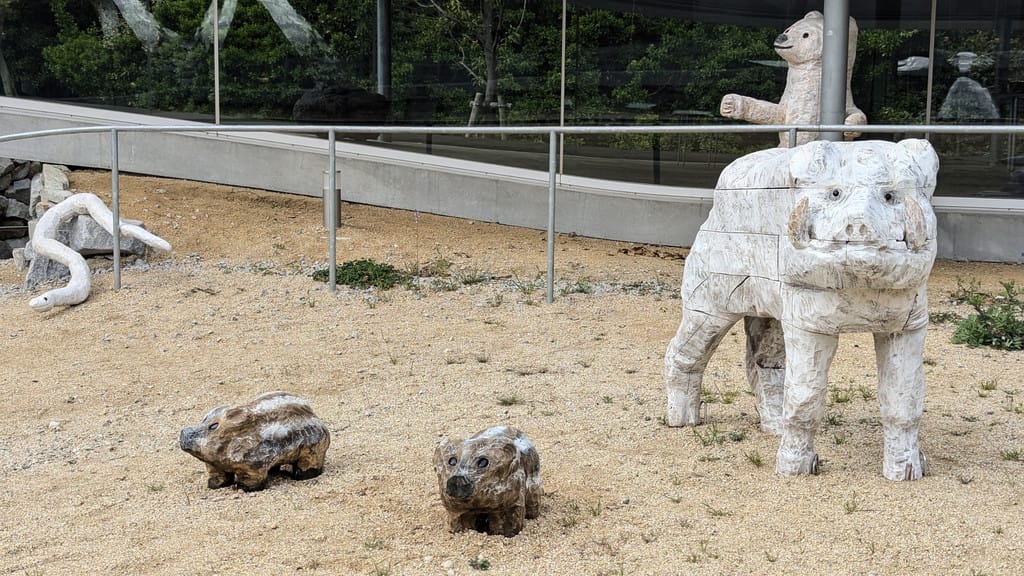
White Animal Wood Block Sculptures by Masahiro Maehara
It was actually cuter and more interesting than it looks in the picture. But it wasn't mind-blowing, don't get me wrong.
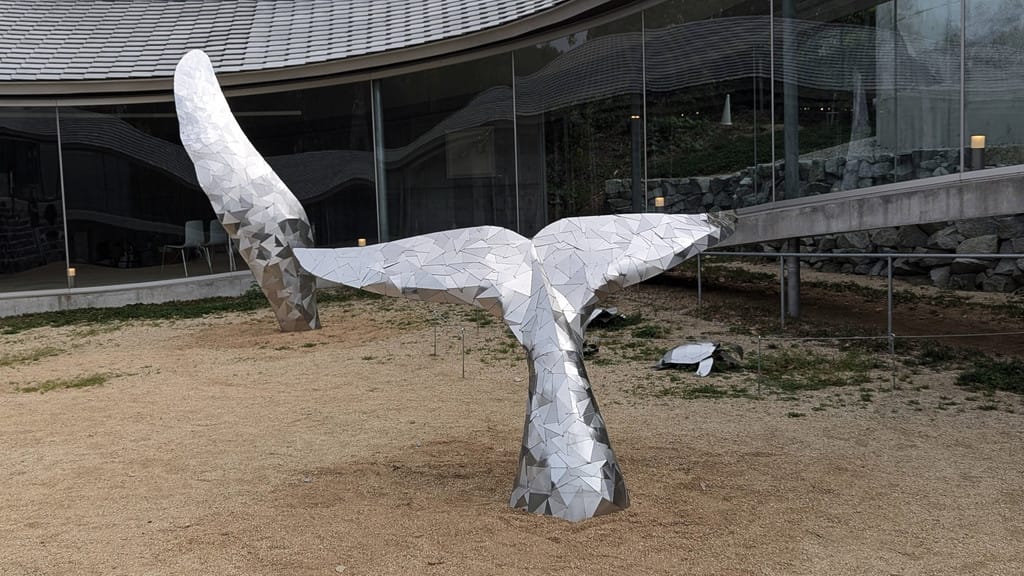
Finally, I really liked Sea and Sky: Interval in the Migration of Time and Space by Tomoaki Shibata. Once again, however, I think the whale is in the wrong place. It would have looked better in a bigger open field or inside an empty room. Oh well.
The turtles, on the other hand, work well where they are and I hope they can stay there permanently.

I didn't take pictures of the remaining two artworks. I liked one of them, but I guess I thought I was going to photograph it later. The other one failed to speak to me.
Overall, is it worth making the trip to Yashima just for these? Probably not. However, if you're not familiar with this part of town, the hill is a great place to enjoy nature close to the city. There is also Yashima-ji, the 84th temple of the Shikoku Pilgrimage, and some amazing views of the Seto Inland Sea and its islands.
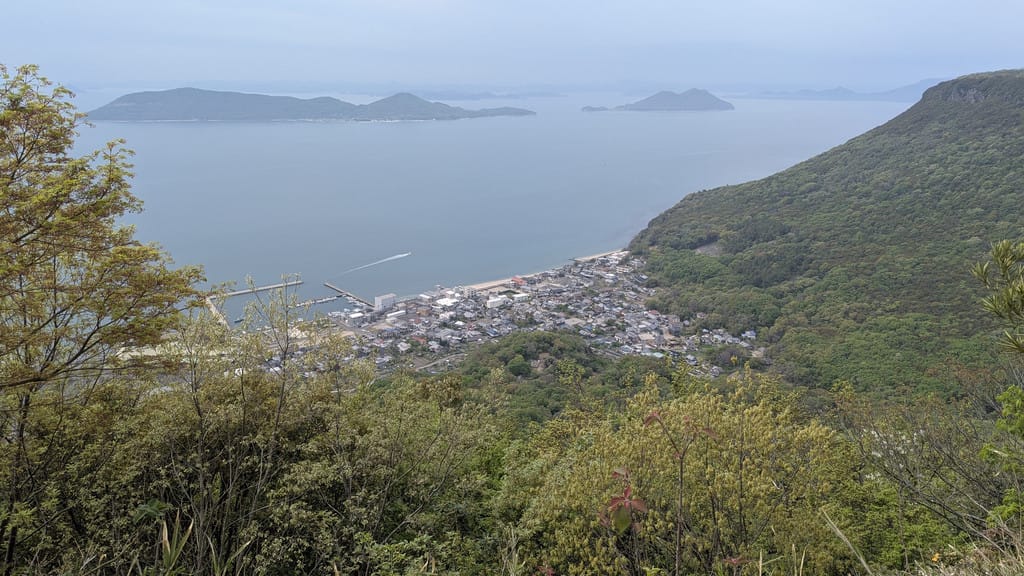
Also, at the foot of the hill is Shikoku Mura, an eco-museum which I would highly recommend visiting. Especially since there is also a small Tadao Ando museum there and it houses some art for the Triennale too. I haven't been yet, but hopefully soon!
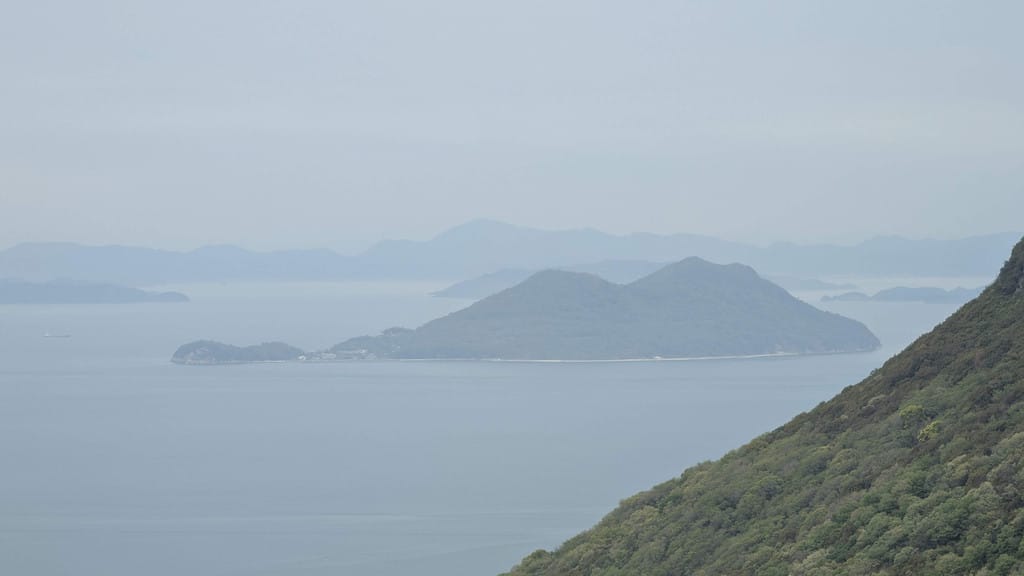
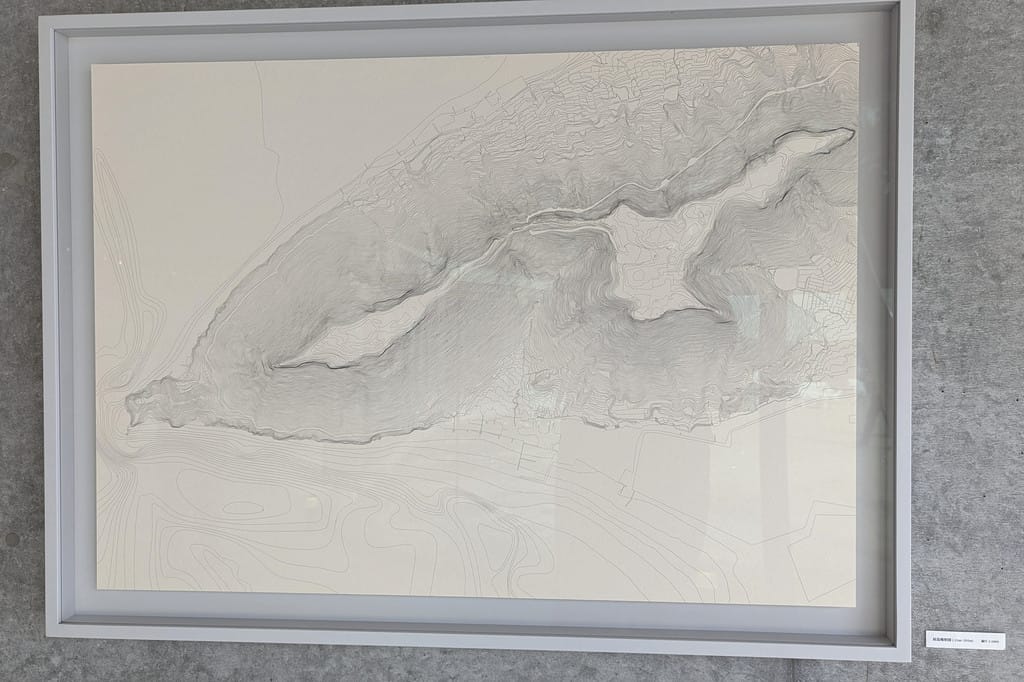
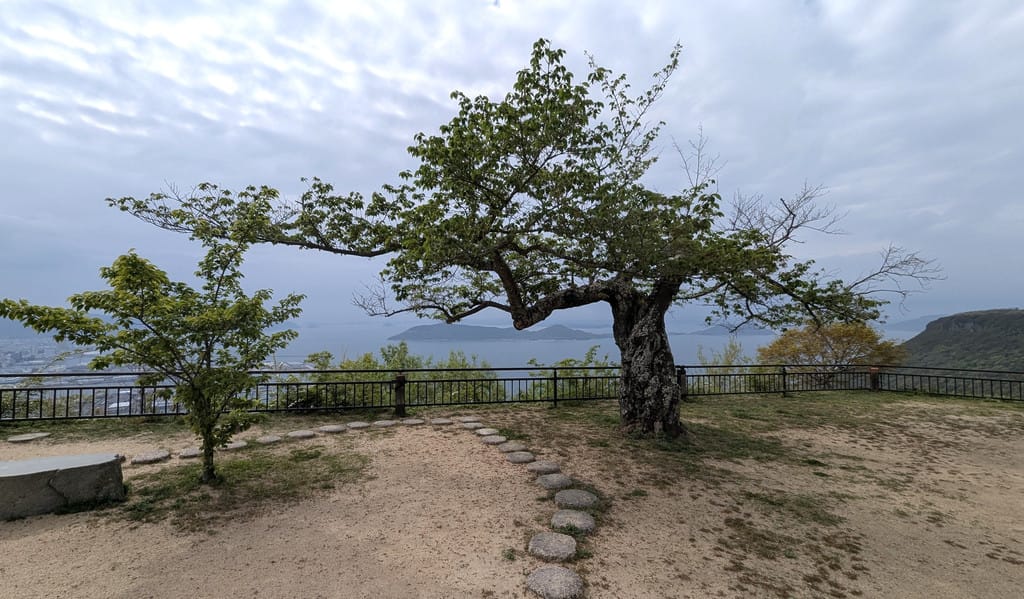
All right, that's pretty much it for today.
I'll just say a few final words about the upcoming weeks. The summer session of the Setouchi Triennale starts in about 10 days. However, I'll be in France for most of August. This means it's unlikely I'll see much art this summer. I'll have a few days before and after my trip, but I may be busy before and tired after. Still, I'll do my best to visit at least some of the art exclusive to the summer.
On the other hand, as I'll be staying with my parents in France and won't be traveling much, I might actually have time to write and finish telling you about the spring session. We'll see.
In the meantime, thanks for reading, and please consider subscribing or sharing the blog/newsletter with friends or contacts who might be interested.
Until next time!
David
